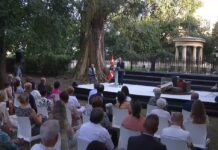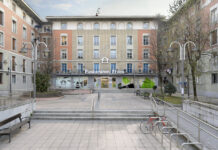«Gure aita cerue tan aicena. Sanctifica bedi sure Icena»
Así se se alababa al Señor a mediado del siglo XVIII en la lengua «Biscaina/Cantabrica» según recoge el mapa de Europa, con las lenguas que se hablaban en el continente, incluido en el libro Synopsis Universae Philologiae, publicado en 1730-1741* en Nuremberg por Gottfried Hensel (Godofredus Henselius, 1687-1767), rector en Hirschberg (Jelenia Góra), Lower Silesia.
Este extraordinario mapa sirve para dar algo de luz a algunas de esas polémicas que algunos han abierto para minimizar el impacto de la lengua vasca, y de los vascos, en la historia.
- La primera, puede que no la más importante pero no menor, es la que se refiere a la utilización en la época de los términos cántabro y biscaino como sinónimos de vasco. Eso puede ayudar a aclarar algunas de las discusiones sobre la utilización de los términos en los que algunos proyectan los nombres actuales (de discutible utilización) a la historia. Como si la situación presente fuera un fiel reflejo de la historia. Cosa que, como podemos comprobar aquí, no lo es.
- La segunda, es referente al peso de la lengua vasca. En el mapa no se recoge, por poner dos ejemplos cercanos, ni el Gallego (sí el Lusitano-portugués), ni el Bable. Pero si el euskera. Lo mismo que aparece en una parte importante del sur-este de la Península Ibérica un idioma al que denomina Mauritano.
De todo esto nos hemos enterado revisando el blog de mapas otomanos The Aftermnoon Map, del que hablábamos en la entrada anterior, El “inclasificable” Euskera en un mapa otomano del “periodo de entreguerras”. En el que se referencia el mapa aparecido en el blog About Strange Maps de Frank Jacobs.
About Strange Maps – 7/1/2008 -USA
231 – Praise the Lord and Pass the Dictionary!

This delicious map is the Europa Polyglotta, published in 1730 by Gottfried Hensel (or Henselius, after the contemporary fasion of latinising surnames). I’ve managed to piece together only very little information on its origin and background because I found it on a Ukranian website, describing it in an alphabet (not to mention language) I don’t understand.
(Sigue) (Traducción automática)
————————
The Aftermnoon Map – 1/12/2013 – USA
Ya Gokteki Babamiz
Today’s map was drawn in 1730 by someone named Gottfried Hensel, and features the opening of the Lord’s Prayer written in all the languages and scripts used throughout Europe (for more check out the entry at Strange Maps). Particularly interesting – aside from the utter incomprehensibility of the version of old english the mapmakers chose to use – is the Ottoman and Tatar renderings of the prayer. As seen below, both are written out in Arabic script using all capital letters, and the Tatar has a questionable transliteration under it. The Ottoman seems to read «Bizim Atamız ki Göktesin» and the Tatar «Ya Babimiz ki yüksek Göktesin.» It’s not clear where the mapmaker got these translations, although the language isn’t that different from several versions of the prayer in modern Turkish. Below are translations in two different registers of Turkish, one which borrows more heavily from Arabic religious terminology. Finally, Google Translate’s attempt, impressive at moments and somewhat silly at others.
(Sigue) (Traducción automática)
* 1730 según la información de los blogs, y 1741 según la información recogida en Wikipedia
Last Updated on May 4, 2017 by About Basque Country































[…] Por cierto, el maravilloso blog en el que se encuentra este mapa, nos ha llevado a descubrir otro también muy interesante, que, dado que merece una entrada propia, l…. […]
Información Bitacoras.com
Valora en Bitacoras.com: “Gure aita cerue tan aicena. Sanctifica bedi sure Icena” Así se se alababa al Señor a mediado del siglo XVIII en la lengua “Biscaina/Cantabrica” según recoge el mapa de Europa, con las lenguas que se hablaban en el…